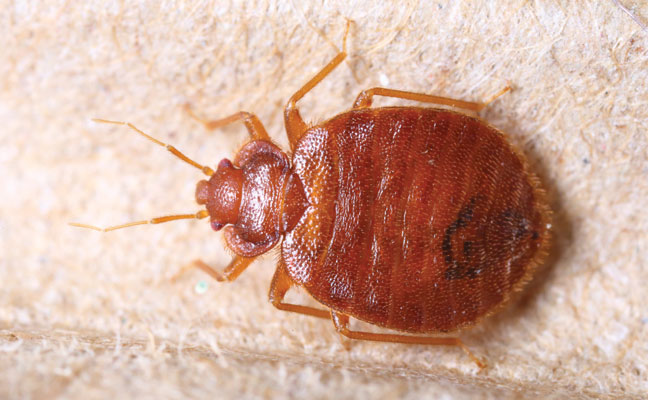
Photos: smuay/iStock / Getty Images Plus/Getty Images
When most U.S. pest management professionals (PMPs) think “bed bug control,” their minds tend to emphasize the control, the killing of as many specimens of Cimex lectularius as possible. While there are bed bug repellents commercially available for luggage, for example, the public is not as much in the mindset of repelling bed bugs as it is for repelling mosquitoes.
Recent findings from researchers at the German Environment Agency might change that, however. The team, which published its findings in the Journal of Economic Entomology, studied how five repellent types affected bed bug repellency when the bugs were looking for shelter vs. looking for food. The repellents were cinnamon oil, diethyltoluamide (DEET), icaridin, margosa extract, and permethrin.
For the harborage test, notes an article from the Entomological Society of America’s (ESA’s) EntomologyToday.org website, “two shelters [one untreated, one repellent-treated] made of filter papers lying on top of each other were placed in a crystallizing dish. The bed bugs were released in the middle of the dish and allowed to choose a harborage. The second system was a barrier test, in which bed bugs were attracted by carbon dioxide and heat (simulating a possible bloodmeal) to walk across filter papers treated with the repellents. In this test, bed bugs were released in a clear acrylic cylinder out of a kitchen towel paper bag, acting as a harborage. The bugs could stay there or crawl to a metal container emitting heat and carbon dioxide. On the way, they had to cross filter paper treated with a repellent.”
There were “significant” differences between harborage and barrier tests, the article reports:
“Repellency overall was much lower in the barrier tests than the harborage tests, with the sole exception of DEET, which repelled 97 percent of bed bugs 24 hours after application. For the harborage tests, DEET and icaridin showed high repellency, and even cinnamon oil showed at least 99 percent repellency of bed bugs 24 hours after application.”
But before you break out the cinnamon sticks, note that in the barrier/food test, another unexpected result emerged, according to the research paper: “Significantly more females crossed the repellent than male bed bugs. Female bed bugs are supposed to be responsible for bed bug dispersal because they tend to hide in new harborages and leave shelters more often for host and harborage seeking. The higher tolerance against repellents shows that efficacy testing should be done with both sexes.”
Leave A Comment